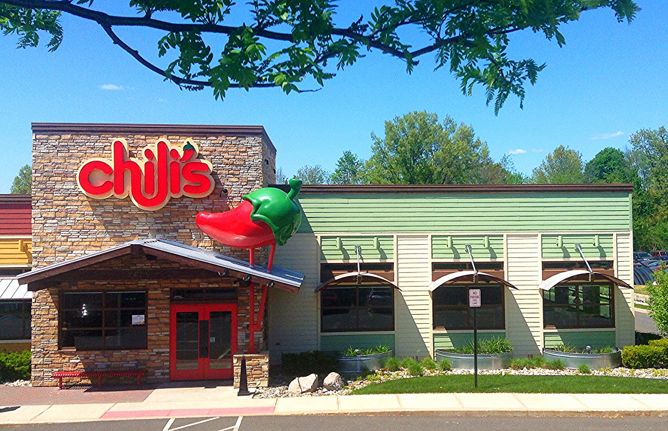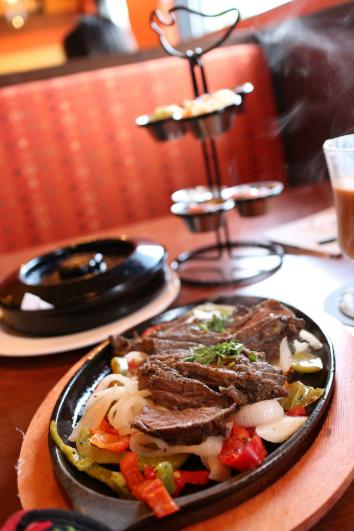How Chili’s and Ford Use Sound to Sell Their Brands

Courtesy of Tess Watson/Flickr
Roman Mars’ podcast 99% Invisible covers design questions large and small, from his fascination with rebar to the history of slot machines to the great Los Angeles Red Car conspiracy. Here at The Eye, we cross-post new episodes and host excerpts from the 99% Invisible blog, which offers complementary visuals for each episode.
This week's edition—about the role of sound in product branding—can be played below. Or keep reading to learn more.
The first trademark for a sound in the United States was issued in 1978 to NBC for its chimes. MGM has a sound trademark for its roaring lion, as does 20th Century Fox for its trumpet fanfare. Harley Davidson tried to trademark the sound of its motorcycles, but after years of litigation, it finally withdrew its application.
Right now there are fewer than 200 active trademarks for sounds. A surprisingly small number, considering sound has the power make—or break—a brand.
Consider, for instance, the fajita. Specifically, the “sizzling fajitas” of the restaurant chain Chili’s.

Courtesy of Mike Mozart/Flickr
It’s a common occurrence at your local Chili’s franchise: A customer orders a fajita; the server brings out a sizzling skillet of fajita meat and onions; and the dish arrives at the table with a dramatic, crackling, fizzling sound. That first order often sets off a chain reaction of several more orders. Cooks at Chili’s called it “the fajita effect.”

Courtesy of Elsie Hui/Flickr
(Chili’s, by the way, did not invent the fajita. That distinction goes to a Texan named Sonny Falcone, who, in the 1970s, thought he could sell a subpar cut of meat called the faja by cooking it out in the open with lots of spices. Chili’s founder Larry Levine had seen fajitas in restaurants around the Rio Grande Valley and decided to make them a staple of his restaurant venture.)
The fajita sizzle was heard in the very first Chili’s commercial. Now Chili’s serves enough fajitas to fill two nuclear submarines a year.
Levine understood the importance of sound, as did another man in a completely different field: Jim Reekes, the designer of one of the few trademarked sounds.
Reekes is a composer and musician who was working at Apple when it was developing the Macintosh II. He hated the startup sound that Apple had been using. (The sound Reekes despised can be heard at the 10-second mark in the video below.)
Reekes designed a more Zen-like, meditative sound meant to imitate a gong, or an “om” chant. Reekes couldn’t get permission to replace the old sound with his new one, so he snuck it into the prototype.
The sound wound up on the Macintosh II computers that shipped. It’s now the sound that is most connected to the Apple brand.
Car companies also consider sound in the design of their products. A Ford Mustang, for instance, will intentionally not sound the same as a Ford Taurus, even if their engines are similar.
In 2008, Ford decided to put out a remake of a Mustang that appeared in the 1968 film Bullitt. The car sounded like this:
Ford wanted to make its special-edition 2008 Mustang sound akin to the one in Bullitt. It was trying, essentially, to make a new car sound old.
This proved especially challenging, because cars made in 1968 were built completely differently; the 1968 model had a carburetor, for instance, and the new model had a fuel injection system. Plus, the Mustang in the movie was enhanced with sounds recorded from a race car—and it’s actually illegal in most places to drive around in a car as loud as the car from the movie would be if it were real.
With all those factors in mind, Ford identified the key characteristics of the Mustang sounds in the movie. It then figured out how to reverse-engineer those notes as best as it could by tweaking the shapes of the tubes in the car’s exhaust system.
Brands that don’t pay attention to sound may get punished by consumers. Case in point: In 2010, Frito-Lay unveiled a new biodegradable SunChips bag. The only problem was that it never considered what that packaging sounded like.
And it was loud. Very, very loud.
That guy in the above YouTube video was not the only person to notice how noisy the bag was. A Facebook page called, in all caps, Sorry I Can’t Hear You Over This SunChips Bag got more than 45,000 likes. The bag became a national news story, and Frito-Lay had to pull the new bag and go back to the old bag.
Sound is the first sense that we respond to. Let’s use it responsibly.
For this story, producer Katie Mingle spoke with Joel Beckerman and Tyler Gray, the authors of The Sonic Boom: How Sound Transforms the Way We Think, Feel, and Buy; Jim Reekes, creator of the Apple startup sound; and Shawn Carney, sound quality engineer for Ford Motors.
To learn more, check out the 99% Invisible post or listen to the show.
99% Invisible is distributed by PRX.
